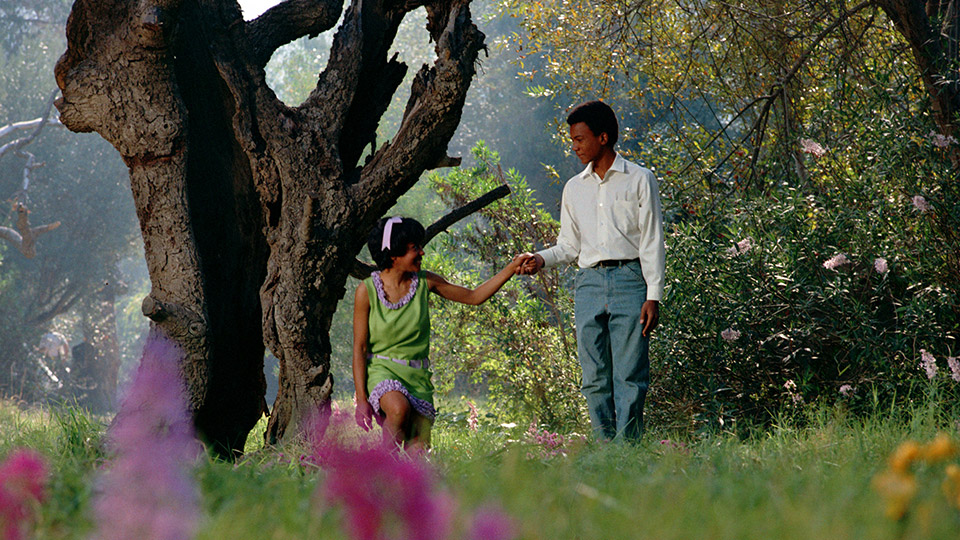Starring: Kyle Johnson, Alex Clarke, Estelle Evans and Mira Waters
Rated: PG Drama
The Learning Tree is based upon the semi-autobiographical novel by acclaimed photographer, writer, director and composer, Gordon Parks. The film shares the same name as Parks’ novel, which was published in 1963. This coming of age film centers upon the quiet and conscientious teenage African-American protagonist, Newt Winger (Kyle Johnson).
Set in Cherokee Flats, Kansas during the 1920s, Newt and his friends spend a great deal of time with each other. One day, they decide to take apples from the trees belonging to Mr. Jake Kiner (George Miner). An altercation occurs when his close friend, Marcus Savage (Alex Clarke), is confronted by Kiner. While Marcus is jailed for his actions, Newt works, as a form of restitution, for Kiner.
Simultaneously, Newt also falls in love with Arcella Jefferson (Mira Waters), who is new to Cherokee Flats. He is tasked with the challenge of attempting to balance his romantic feelings with becoming more astute on how racism and classicism impact his life.
This is a powerful film in which viewers urgently want to learn how Newt will discern ways to navigate the complex realities of love, truth, loyalty, equity, justice, entitlement, violation, death and redemption.
Released in 1969, The Learning Tree was the first film produced by a major Hollywood studio (Warner Bros.) that was written, directed and composed by an African-American. The title is sourced from a line that Sarah Winger (Estelle Evans) says to her son, Kyle: “Let Cherokee Flats be your learning tree.”; meaning that he has a foundation from where he can source inspiration. The film, though set in the fictional town of Cherokee Flats, was actually filmed in Gordon Parks’ hometown of Fort Scott, Kansas.
The novel and film were based upon life events of Parks, who was born in 1912. He was a member of the second generation of Exodusters. The Exodusters were African-Americans who, en masse, left areas in the South along the Mississippi River to settle in Kansas in 1879. Seeking better opportunities in life, the Exodusters represented the first mass migration of African-Americans after The Civil War. The Exodusters’ hopes and works for greater were passed down to following generations and Parks’ poignantly conveys these.
In visually presenting the joys and sorrows of reality for many Blacks, the film premiered at the Trans-Lux Theatre in New York City. The Learning Tree garnered critical acclaim and in 1969, Estelle Evans was gifted an Image Award for “Outstanding Actress in a Motion Picture” by the National Association for the Advancement of Colored People (NAACP).
In 1989, the National Film Preservation Board (NFPB) created the National Film Registry in order to select films worthy of preservation. As per their literature, the NFPB annually selects “up to 25 culturally, historically or aesthetically significant films … with a mission to ensure the survival, conservation, and increased public availability of America’s film heritage.” In the inaugural year of the NFR, The Learning Tree was selected for admission into this prestigious collection. To properly understand the profound significance of The Learning Tree being inducted, it should be noted that the other 24 films inducted into the National Film Registry for that year, “1989”, included Casablanca, Citizen Kane, Gone with the Wind, Grapes of Wrath, High Noon, Mr. Smith Goes to Washington, Nanook of the North, On the Waterfront, Singing in the Rain, Some Like It Hot, Star Wars, Sunset Boulevard and The Wizard of Oz.


